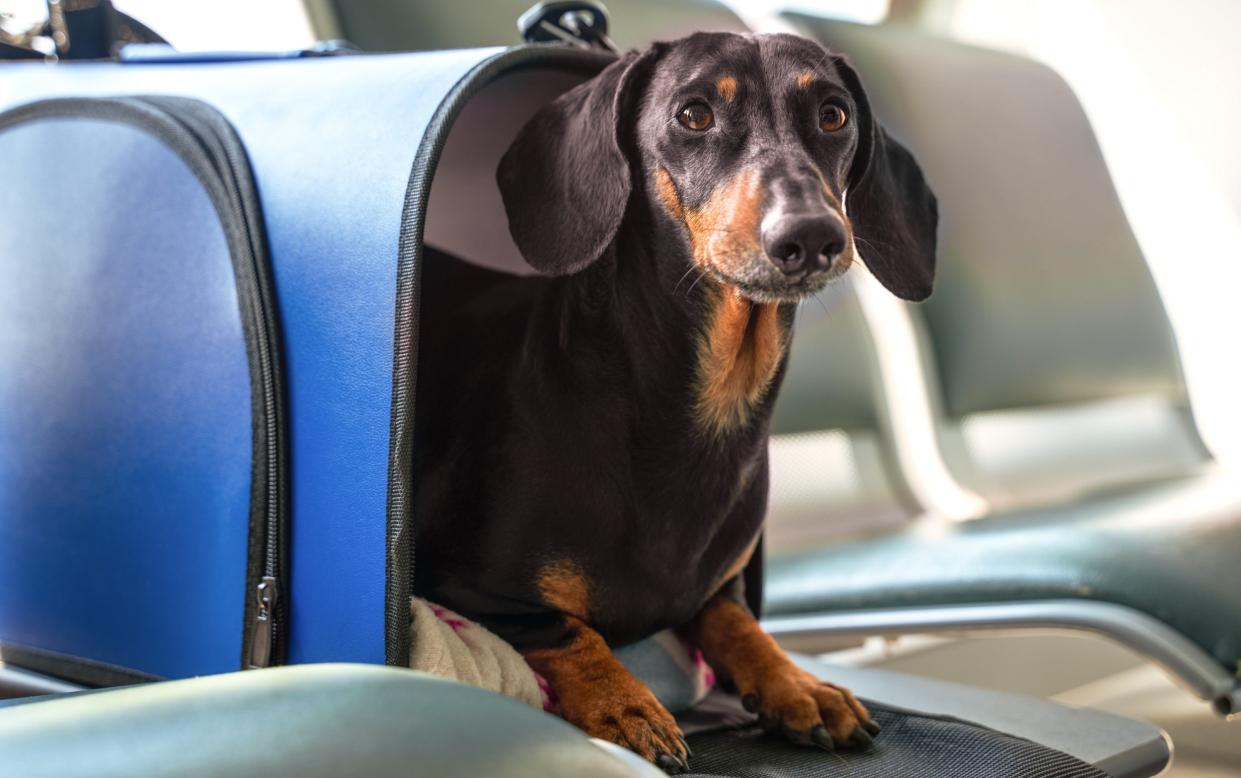The unwritten etiquette of flying with your dog

I’ve only flown with my own dog once – well, twice if you count the return journey – and suffice to say, I’d probably never do it again. It wasn’t a disaster as such – my late Manchester terrier, Milo, didn’t bite anyone or relieve himself in the aisle, as one dog did on a United flight earlier this month, causing the entire plane to be diverted. But he did bark from inside his cage for the entire 20-minute trip to the Isles of Scilly.
Milo wasn’t traumatised by his experience; he merrily yanked my arm on the end of his lead up the steps to the 10-seater aircraft for our flight back to the mainland after our holiday. But the rest of us probably were in some small way. Though perhaps not as traumatised as the passengers dealing with the dog mess by the first class loo on that Seattle-bound airliner.
There are a few unwritten rules when it comes to flying with your dog – no toileting in the aisle, or anywhere else on an enclosed metal tube 30,000 feet in the air, is a good one to remember. But there are some official, actually written-down rules, too. For starters, in the UK, the Department for Environment, Food & Rural Affairs (Defra) states that the only dogs allowed to fly with their owners are assistance dogs, such as seeing dogs, hearing dogs or medical alert dogs; emotional support animals are not considered assistance dogs. Unfortunately for those of us with lofty travel plans, pets can only be transported in and out of the UK by plane when checked in as cargo.
However, across the pond in the United States and Canada, and on the European continent, myriad airlines will allow small dogs (usually up to 17lb) to fly with you in the cabin, so long as they’re kept inside a carrier of specific size that fits beneath the seat in front of you. It might seem a little unfair (who doesn’t want to have a cuddle with Cookie while zooming across the skies to the Canaries?), but all airlines require your dog to be kept inside the carrier at all times. This avoids any unwanted mess on the flight and any disturbance to fellow passengers. But unfortunately – as evidenced by the United Airlines incident – not everybody follows the rules.
The endlessly entertaining forums on Reddit are a goldmine of stories from flight attendants who have seen such chaos. “I was charged at by an ‘emotional support’ pitbull when I was doing the safety demo... and the owner had the audacity to get upset when we removed them,” wrote one user on a thread about animals travelling inside aircraft. Another complained that really it’s the owners who are the problem, with some trying to sneak their pets into first class, where there’s no under-seat stowage. There was some defence for the dogs, too, though: “Pets typically are the most well-behaved passengers. Never had a dog threaten to stab me or take a piss in the galley,” wrote one user.
Beyond the rules and regulations, of course, there’s a common-sense etiquette that needs to be applied. The first and main rule being: not everyone likes dogs, so don’t let your dog interact with everybody without their consent. In fact, this is a good mantra to remember when travelling anywhere with your dog, not just when flying. Other people have phobias, allergies or, if they’re completely heartless, general disdain for dogs, so keeping your dog to itself is important. That means no begging for attention from passengers in the check-in queue.
It’s essential to exercise your dog before flying so they can relax on the plane, and ensure they’ve relieved themselves prior to boarding so you can rest assured they’re not going to divert the plane with a badly timed poo – some airports have special pet relief areas installed for this very purpose. Finally, bringing a handful of small training treats can be useful for helping them regulate the air pressure in their ears during altitude changes (this is often the cause of most distress for dogs on planes), and giving them a small, long-lasting chew can help them remain focused and calm while you fly.
Now, if this all sounds a little too restrictive for your pet, there is a better way to fly: K9 Jets. This private-aircraft airline charters small planes in the US and Europe solely for dog owners. It costs a pretty penny (think around £5,500-£7,000 each way if you’re flying transatlantic), but if you’ve got five figures to fritter away on a flight to and from the States, you’ll get to join a host of other dog owners on your private jet, where the animals can lounge around at their leisure. “On a K9 Jets flight, all pets sit on your lap or beside you in the cabin. No crates, no dark cargo spaces,” says co-founder Adam Golder.
While their dog shouldn’t have been out of its carrier at all on that United flight, I really feel for that poor owner: there’s little you can do if your dog needs to go. I know all about that: on that same trip to the Scillies, Milo gave the carpet of our hotel lobby a golden shower when the staff got him too excited with all their fussing at reception. But perhaps it’s an important lesson to all us pet owners: the lesson being, just don’t do it. Forget flying with the dog and stay in the UK instead – we’ve plenty of adventures right on our doorsteps. Though perhaps best take the boat to the Isles of Scilly.

